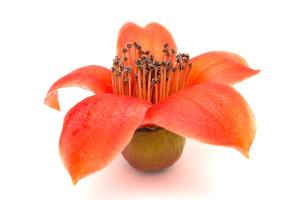How to Set Up Indoor Water Plants
Indoor water plants are a beautiful addition to any home or office. They not only add color and vibrancy, but they also improve air quality and reduce stress levels. However, setting up indoor water plants can be intimidating for beginners. Here is a step-by-step guide to help you get started.
Choose the Right Plants
The first step in setting up indoor water plants is to select the right plants. Some popular indoor water plants include peace lilies, spider plants, and lucky bamboo. Make sure to choose plants that are appropriate for the size of your water container and the lighting conditions of your space.
Select the Right Container
When selecting a container for your indoor water plants, choose one that is transparent and will allow sunlight to penetrate the water. Make sure the container is large enough to accommodate the plants you have chosen and has a stable base to prevent spills. You may also consider adding a pebble tray underneath to help regulate humidity levels and provide extra decorative appeal.
Prepare the Water
The water that you use for your indoor water plants is crucial to their health and longevity. You can use tap water, but make sure to let it sit uncovered for 24-48 hours to allow the chlorine to dissipate. Alternatively, you can use distilled water or collect rainwater for a more natural option. Make sure to keep the water level consistent and change it every few weeks to prevent stagnation.
Get the Right Lighting
Indoor water plants require adequate lighting to grow and thrive. Place your container in a location that receives indirect sunlight or use a grow light to supplement natural light. Avoid exposing your plants to direct sunlight, which can cause damage to the leaves.
Feed Your Plants
Indoor water plants require nutrients to grow, just like any other plant. Use a liquid fertilizer specifically formulated for hydroponic plants and add it to the water at the recommended dosage. Be careful not to overfeed, as this can damage the plants and cause the water to become overrun with algae.
Maintain the Plants
Maintaining your indoor water plants is key to their success. Keep an eye out for any signs of pests or disease and address them promptly. Prune any dead or damaged leaves and make sure to regularly replenish the water. You should also clean the container periodically to prevent the buildup of algae or other debris.
Conclusion
Setting up indoor water plants may take some effort, but the rewards are worth it. With proper care and maintenance, your indoor water plants will thrive and bring beauty and relaxation to your home or office. Remember to choose the right plants, container, water, lighting, and nutrients, and don't forget to maintain your plants regularly. Good luck!

 how many times do yo...
how many times do yo... how many planted tre...
how many planted tre... how many pine trees ...
how many pine trees ... how many pecan trees...
how many pecan trees... how many plants comp...
how many plants comp... how many plants can ...
how many plants can ... how many plants and ...
how many plants and ... how many pepper plan...
how many pepper plan...





























